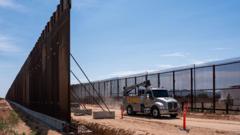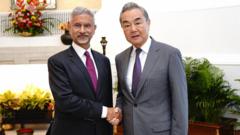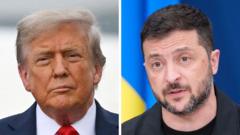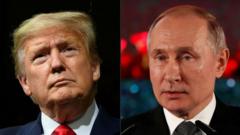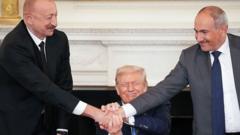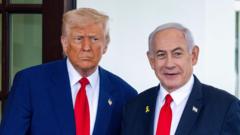In a notable stance, the Federal Reserve has opted for the fourth consecutive time to keep its key interest rates steady at 4.3%. This decision comes against a backdrop of deteriorating economic forecasts that signal slower growth, increased unemployment, and heightened inflation pressures.
Fed Maintains Interest Rates Amid Economic Uncertainty
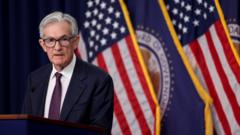
Fed Maintains Interest Rates Amid Economic Uncertainty
The Federal Reserve's decision underscores persistent economic challenges while responding to external pressures.
Despite turbulent changes to trade policies and ongoing commentary from President Donald Trump advocating for rate cuts, the Fed remains cautious. It aims to assess how tariffs and other policies will impact prices and economic growth before making significant adjustments. Current perspectives from the bank reflect a modest adjustment in growth predictions, forecasting only 1.4% growth for the year, in contrast to prior estimates. Inflation rates also appear to be rising, currently sitting at 2.4%, surpassing the Fed's target.
Fed Chair Jerome Powell’s independence from political influence is emphasized as he continues to focus on empirical data. Recent criticisms from Trump suggest a growing tension as the Fed maintains its approach, prioritizing economic stability over external political pressures. Analysts believe that this independence is integral to the Fed's strategy, as long-term economic answerability takes precedence over short-term political clamor.
International peers like the European Central Bank and the Bank of England have taken more aggressive stances, cutting rates in efforts to stimulate their economies. However, the Fed appears committed to its current path, with investment managers noting that a clear rationale for a shift in policy is lacking. As borrowing costs strongly influence broader economic conditions, the Fed's decision remains critical for households and businesses navigating a fluid economic landscape.
Fed Chair Jerome Powell’s independence from political influence is emphasized as he continues to focus on empirical data. Recent criticisms from Trump suggest a growing tension as the Fed maintains its approach, prioritizing economic stability over external political pressures. Analysts believe that this independence is integral to the Fed's strategy, as long-term economic answerability takes precedence over short-term political clamor.
International peers like the European Central Bank and the Bank of England have taken more aggressive stances, cutting rates in efforts to stimulate their economies. However, the Fed appears committed to its current path, with investment managers noting that a clear rationale for a shift in policy is lacking. As borrowing costs strongly influence broader economic conditions, the Fed's decision remains critical for households and businesses navigating a fluid economic landscape.

